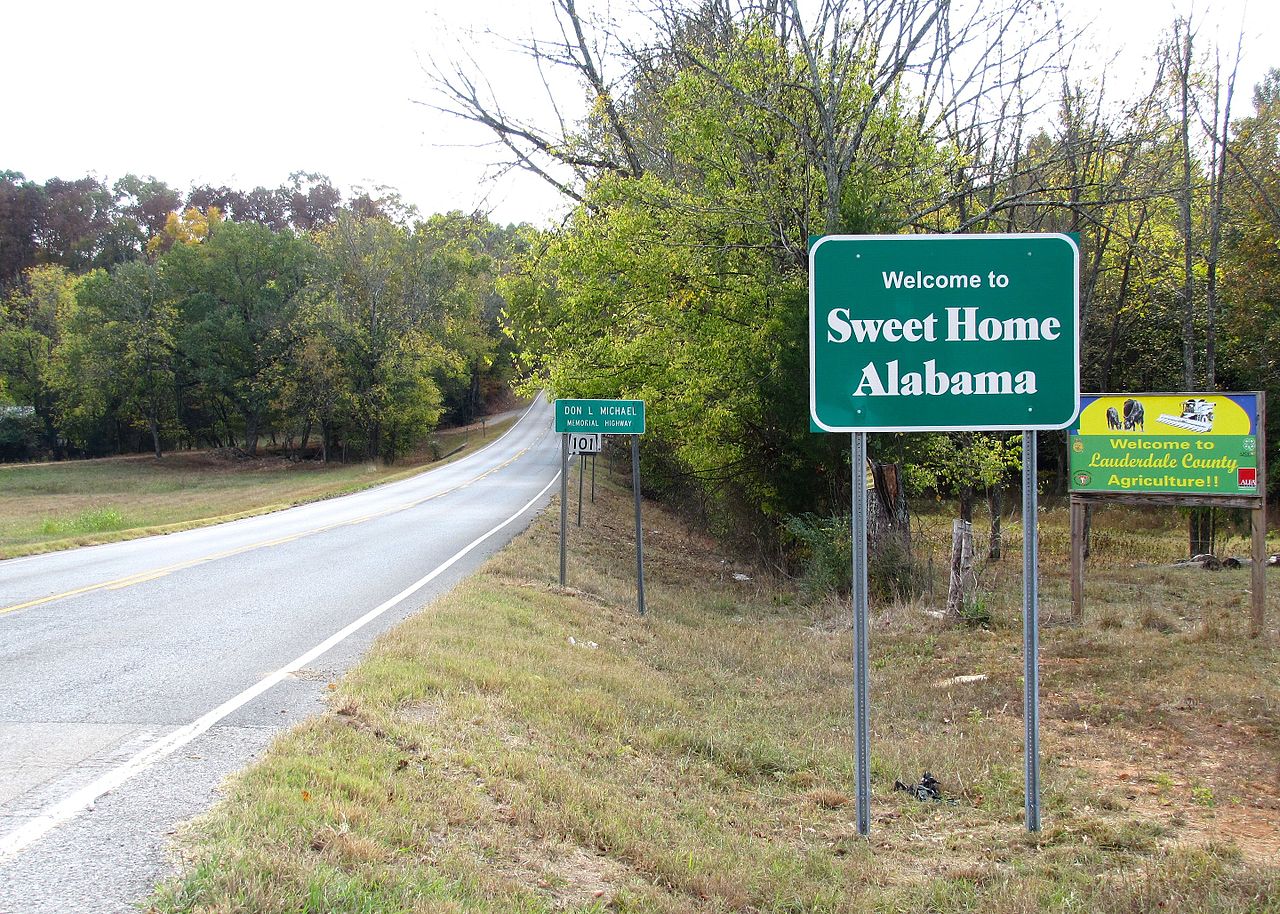
19 May Who’s Guarding The House? A Bizarre Prison Guard Story
There’s a bizarre story out of Alabama that has flashed across the news in the last few days. Capital murder suspect Casey Cole White and the prison guard who was transporting him to a court-ordered mental health appointment at the Lauderdale County courthouse vanished. The officer was not just any prison guard. She is Vicky White (no relation), the Assistant Director of Corrections in the Lauderdale County Sheriff’s Department, and was in her last day on the job.
Casey White did not, in fact, have any scheduled appointment at the county courthouse. Their getaway vehicle was later found in Tennessee. Lauderdale County Sheriff Rick Singleton ended up acknowledging that an investigation established that the two had a “special” and, in fact, “romantic” relationship. By the time officials captured Casey White, Officer White had died from a self-inflicted gunshot wound.
Ultimately, it is certain that Officer White disregarded basic rules of prisoner transportation. When things like this occur, people concerned about incarceration must reckon with who the people are that we entrust with incarceration and what are they trained to do. The United States spends billions of dollars every year on its various correctional systems. There is wide political acceptance that incarceration is, at least, a part of the answer.
In 2022, there are 102 operating federal correctional facilities, 1566 state and 2850 local facilities. These numbers do not include juvenile or immigrant detention centers. It is not possible to tell exactly what level of training the correctional staffs of all of these have. But Americans deserve a chance to understand what correctional systems seem to see as appropriate security personnel and the required training they receive.
How Do You Become A Prison Guard?
The Federal Bureau of Prisons has detailed criteria for who can work in a federal correctional facility. The most basic requirement is that an employee must be a citizen of the United States. For most openings, and certainly “guard” positions, you must be less than 37 years old. Applicants must all undergo a medical and physical examination, from a federal examiner, which includes a drug test.
The applicant must also undergo a “background investigation” to determine whether the person is suitable to work in law enforcement. Not surprisingly, this includes a criminal and “law enforcement” records check. It also includes inquiries with the applicant’s previous employers and personal references. In order to determine an applicant’s “suitability,” BOP administration must ascertain that each individual wishing to join the ranks will have the “character of conduct” that will positively affect the agency’s accomplishment of “its duties and responsibilities.” These factors play heavily during the candidate’s interview process and beyond.
In BOP parlance being hired is being “appointed” to the position. The new appointee will report to her or his assigned location and begin acquainting her or himself with the facility. The individual will also receive what the bureau calls “Introduction to Correctional Techniques Phase I.” This includes the facilities training, as well as learning BOP policies and procedures and techniques for “supervising and communicating with inmates.” New hires can expect to start at a salary of about $38,000 per year. The average BOP salary is about $54,000. However, if one gets to the lieutenant level or higher, the salaries reach $60,000 and considerably more.

The Physical Abilities Test and the Academy
Within the first 60 days after appointment, the new employee will be sent to the Federal Law Enforcement Training Center, just outside of Brunswick, in Glynn County, Georgia There, he or she undergoes “Phase II” which includes vital aspects of training. The new appointee will receive specialized training in firearms and self-defense. He or she will also take a written academic test on the bureau’s policies and procedures. The most grueling part of the training, however, is the Physical Abilities Test (PAT).
The bureau considers the PAT a measurement of the appointee’s “ability to perform the essential functions of a correction worker.” The appointee must be able to perform these tasks:
- walk and stand up to one hour,
- see a human figure at a distance of one quarter mile or a target at 250 yards,
- hear and detect movement,
- use firearms,
- perform self-defense movements,
- lift, drag and carry objects,
- smell smoke and drugs,
- complete an obstacle course within 58 seconds,
- drag a 75-pound dummy three minutes continuously for a minimum of 694 feet,
- climb rungs of a ladder and retrieve an item within seven seconds,
- run one-fourth of a mile and apply handcuffs within two minutes and 35 seconds and
- climb up and down 108 steps with a 20-pound weight belt within 45 seconds.
According to the employment website Glassdoor, it takes the average new employee 73 days to complete the application process and the two training levels. The appointee is considered on probation for one year after completion of the training. Federal correctional employees are also required to complete between 16 and 40 hours of subsequent training each year, as well as optional training that is available “to enhance career development.”
Alabama Officers
Having looked at the federal level, it’s insightful to look at the lowest level, which returns us to Alabama, one of the states which spends the least per prisoner in the country. Lauderdale County Sheriff Rick Singleton summed it up by saying “{t}he pay is pathetic … [a]nd the work environment is … one of the worst you could ask for.” Vicki White was probably one of the better paid officers. The job site Zip Recruiter reports that corrections staff in the Florence area get 20% more than those in the rest of the state.
Alabama Corrections Department’s mission statement declares that they are “[d]edicated professionals providing public safety through safe and secure confinement, rehabilitation and successful re-entry of offenders.” The qualifications for being an Alabama officer are like those of federal officers. Physical fitness and training, coupled with firearms training and self-defense, are criteria. Successful applicants must attend between six- and twelve-week courses at the Alabama Department of Corrections Academy, which includes more physical fitness assessment.
New York Officers
New York, one of the top three in state corrections spending, requires qualifications similar to the federal norms. The compensation in New York is much better than most other places. The starting pay for a New York Corrections trainee is better than the most senior officer in Alabama. One difference from most states is there are special bilingual positions which require Spanish proficiency along with English.
Applicants must also pass a drug test, a background check and medical and physical examinations. Then, they must also score a minimum of 70% on the state civil service examination. If the applicant fulfills these qualifications, he or she is “appointed” as a trainee. The trainee attends eight weeks of training camp, which includes the physical rigors endured in federal training, and then another four weeks of peace officer training. The trainee is on probation for twelve months, at the end of which his or her pay grade steps up to over $55,000 per year.

What Does It Take To Be A Prison Guard?
The general requirements to be a correctional officer are similar in all jurisdictions. An officer must be at least 18 years old (some states require as old as 21), have a high school diploma or GED, have a clean criminal record (some states allow juvenile or misdemeanor records in rare cases) and be able to work in the United States. All jurisdictions require passage of some form of written examination and a high level of physical strength, endurance and stamina.
According to correctionalofficeedu.com, a website maintained by a consortium of college-level criminal justice programs, successful correctional officers must also possess critical-thinking skills, self-discipline, communication and negotiation skills and “good” judgment. However, in the criteria I examined, these “successful” attributes placed well behind the physical qualifications, if acknowledged at all.
The Worst You Could Ask For
No well-adjusted person wants to go to prison. And it is difficult to find people to guard prisoners. Sheriff Singlton’s assessment of the prison environment is damningly accurate. Spending seemingly endless hours in a largely colorless building interacting with people who are, at best unhappy and, in many cases conniving or downright evil, does not make a recipe for a fulfilling career.
One can glimpse how Vicky White and Joyce Mitchell, the facilitator of the 2015 Dannemora prison break in New York, could find themselves in their seemingly insane situations. Working in such depressive, dystopian environments matched with equally troubled home lives may have left them vulnerable to the predations of depraved manipulators.
The compensation for this unrewarding work is inferior to every other position in safety and law enforcement. A correctional officer or prison guard generally receives $20,000 per year less than police officers. They also generally receive $7,000 to 8,000 per year less than firefighters. What’s more, the job does not carry the high public regard those other jobs do. Many correctional officers take the job as a steppingstone into these better regarded positions.
Getting Our Money’s Worth
If mass incarceration is the bulwark of society’s public protection, then each correctional officer and prison guard are its spearhead. However, the pay and training they receive is unmistakable confirmation that it is a system that is essentially about warehousing and not rehabilitating human beings.
Incarceration is a multi-billion-dollar public commitment. Are we getting our money’s worth?

